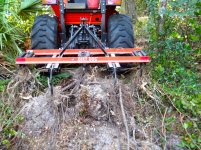This DIAGRAM, posted by LD1, really opened up my eyes on this subject. So it seems a fair amount of adjustment can be made using parts that come standard, without buying additional spacers.
Let's say we want to run 60" wide 3pt implements, then we should set up the rear wheel track at 60" from the beginning, before filling the tires.
You guys really know your tractor stuff. This has been most informative. The dealers I visited did not mention this, probably because they thought it was common knowledge. Now I need to get a manual for Kioti CK2610HST, as that is the tractor in my near future.

Let's say we want to run 60" wide 3pt implements, then we should set up the rear wheel track at 60" from the beginning, before filling the tires.
You guys really know your tractor stuff. This has been most informative. The dealers I visited did not mention this, probably because they thought it was common knowledge. Now I need to get a manual for Kioti CK2610HST, as that is the tractor in my near future.

